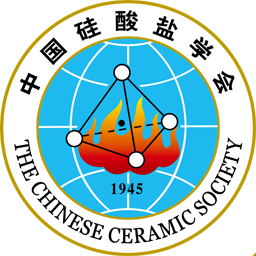S1: Frontiers in Advanced Structural Ceramics and composites: From Daily Use to Extreme Heat
Modern structural ceramics and composites are engineering marvels that thrive in both ordinary and extreme conditions. At room temperature, these materials are becoming indispensable in the industries for semiconductor, healthcare, cutting tools etc. When temperatures soar beyond 1,500°C, such as in jet engines or spacecraft heat shields, advanced ceramics truly shine. New ultra-high-temperature ceramics (UHTCs) like ZrB2 composites can withstand blistering heat while fending off oxidation-a critical feature for reusable rockets. Scientists are also mimicking nature to boost performance: nacre-inspired ceramic-based laminates, layered like seashells, combine strength and flexibility to avoid sudden fractures under stress. For thermal insulation, "graded" ceramic coatings 3D-printed with microscopic cooling channels are protecting turbine blades, doubling their lifespan under extreme thermal cycling. In composites, next-generation ceramic matrix composites (CMCs), such as SiC/SiC systems with tailored fiber-matrix interfaces, achieve unprecedented thermomechanical performance through advanced coating technologies like rare-earth oxide layers. Additive manufacturing now allows intricate geometries with graded microstructures, optimizing heat dissipation and load distribution in turbine blades and hypersonic vehicle components.
We are delighted to announce the Session on Frontiers in Advanced Structural Ceramics and composites: From Daily Use to Extreme Heat as part of the upcoming CICC-14 conference. This session aims to provide a platform for researchers, scientists, and engineers to present and discuss the latest advancements, challenges, and innovations in the field of all kinds of structural ceramics and composites.
Session Scope & Themes
This session will spotlight cutting-edge innovations across four critical domains:
1.Ubiquitous Engineering Solutions
Breakthroughs in room-temperature applications (semiconductor manufacturing, biomedical implants, precision cutting tools) leveraging ceramics wear resistance, biocompatibility, and chemical stability.
2.Ultra-High-Temperature Frontiers
Advances in ultra-high-temperature ceramics (UHTCs) for aerospace thermal protection, reusable rocket nozzles, and hypersonic vehicle shielding, emphasizing oxidation resistance beyond 2,000°C.
3.Bioinspired & Additively Engineered Architectures
Nature-mimetic designs (nacre-like laminates, hierarchical microstructures) and 3D-printed graded coatings with embedded cooling channels, revolutionizing thermal management in turbine blades and nuclear reactors.
4.Next-Generation Composites
Ceramic matrix composites (CMCs) with engineered fiber-matrix interfaces (SiC/SiC, oxide-Oxide systems), rare-earth oxide coatings, and AI-optimized additive manufacturing for hypersonic propulsion and energy systems.
Organizers:
Ji Zou, Wuhan University of Technology, China
William G, Missouri University of Science and Technology, USA
Jon Binner, University of Birmingham, UK
Bai Cui, University of Nebraska-Lincoln, USA (to be confirmed)
Laura Silvestroni, Institute of Science and Technology of Ceramics-CNR, Italy
Guanghua Liu, Tsinghua University, China
Qiaodan Hu, Shanghai Jiaotong University, China
Fang He, Tianjin University, China
Kan Zhang, Jilin University, China
Yongsheng Liu, Northwestern Polytechnical University, China
Yujin Wang, Harbin Institute of Technology, China
Point of Contact:
Prof Ji Zou Wuhan University of Technology, ji.zou@whut.edu.cn
Modern structural ceramics and composites are engineering marvels that thrive in both ordinary and extreme conditions. At room temperature, these materials are becoming indispensable in the industries for semiconductor, healthcare, cutting tools etc. When temperatures soar beyond 1,500°C, such as in jet engines or spacecraft heat shields, advanced ceramics truly shine. New ultra-high-temperature ceramics (UHTCs) like ZrB2 composites can withstand blistering heat while fending off oxidation-a critical feature for reusable rockets. Scientists are also mimicking nature to boost performance: nacre-inspired ceramic-based laminates, layered like seashells, combine strength and flexibility to avoid sudden fractures under stress. For thermal insulation, "graded" ceramic coatings 3D-printed with microscopic cooling channels are protecting turbine blades, doubling their lifespan under extreme thermal cycling. In composites, next-generation ceramic matrix composites (CMCs), such as SiC/SiC systems with tailored fiber-matrix interfaces, achieve unprecedented thermomechanical performance through advanced coating technologies like rare-earth oxide layers. Additive manufacturing now allows intricate geometries with graded microstructures, optimizing heat dissipation and load distribution in turbine blades and hypersonic vehicle components.
We are delighted to announce the Session on Frontiers in Advanced Structural Ceramics and composites: From Daily Use to Extreme Heat as part of the upcoming CICC-14 conference. This session aims to provide a platform for researchers, scientists, and engineers to present and discuss the latest advancements, challenges, and innovations in the field of all kinds of structural ceramics and composites.
Session Scope & Themes
This session will spotlight cutting-edge innovations across four critical domains:
1.Ubiquitous Engineering Solutions
Breakthroughs in room-temperature applications (semiconductor manufacturing, biomedical implants, precision cutting tools) leveraging ceramics wear resistance, biocompatibility, and chemical stability.
2.Ultra-High-Temperature Frontiers
Advances in ultra-high-temperature ceramics (UHTCs) for aerospace thermal protection, reusable rocket nozzles, and hypersonic vehicle shielding, emphasizing oxidation resistance beyond 2,000°C.
3.Bioinspired & Additively Engineered Architectures
Nature-mimetic designs (nacre-like laminates, hierarchical microstructures) and 3D-printed graded coatings with embedded cooling channels, revolutionizing thermal management in turbine blades and nuclear reactors.
4.Next-Generation Composites
Ceramic matrix composites (CMCs) with engineered fiber-matrix interfaces (SiC/SiC, oxide-Oxide systems), rare-earth oxide coatings, and AI-optimized additive manufacturing for hypersonic propulsion and energy systems.
Organizers:
Ji Zou, Wuhan University of Technology, China
William G, Missouri University of Science and Technology, USA
Jon Binner, University of Birmingham, UK
Bai Cui, University of Nebraska-Lincoln, USA (to be confirmed)
Laura Silvestroni, Institute of Science and Technology of Ceramics-CNR, Italy
Guanghua Liu, Tsinghua University, China
Qiaodan Hu, Shanghai Jiaotong University, China
Fang He, Tianjin University, China
Kan Zhang, Jilin University, China
Yongsheng Liu, Northwestern Polytechnical University, China
Yujin Wang, Harbin Institute of Technology, China
Point of Contact:
Prof Ji Zou Wuhan University of Technology, ji.zou@whut.edu.cn




